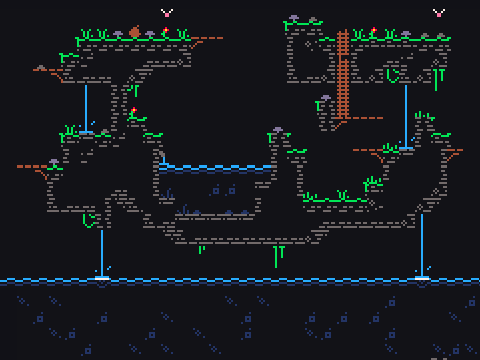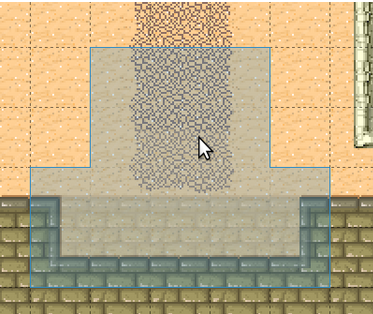Autotiling is a system for automatically picking which tile to place on the map, based on user input. It’s a fast way to design levels without having to fiddle with every tile indivually to ensure they are all consistent. Autotiling becoming increasingly well supported by game engines.

While there’s not a great deal of standardization at the moment, I’d say that 90% of systems at the moment are based on marching squares, which chooses between 16 tiles based on user input at each corner, or blob, which chooses between 47 tiles based on user input on each tile. For example, Godot’s Autotiling system or Tiled’s Terrain brush. I’ve written about these and other schemes before.
These approaches do work quite well for quickly whipping up a level, after the initial slog of creating the tiles, but when you start getting into more complex cases, a major shortcoming appears: combinatorial explosion.
Basically, as autotilers chose one tile for each situation, there needs to be a tile ready for any given combination. It’s bad enough creating 47 tiles needed for the blob pattern, but that only handles transitions between two different terrains. If you add a third, you need hundreds of tiles. And even simpler patterns quickly blow up with a few terrains.
Today, we look at a few ways to deal with that.
Continue reading